This winter, say no to buying, selling, and eating Nassau grouper. Let’s give these fellas some time for romance!
It’s that time of year again… Nassau grouper are having sex.
That’s right. In the name of courtship and mating , Nassau grouper are aggregating in large schools of hundreds to thousands of fish to get their freak on throughout the Caribbean and The Bahamas. These massive gatherings, called Fish Spawning Aggregations (FSAs), happen off predictable deep-water areas every year, typically around the winter full moons.
Migrating to FSAs ¬where these otherwise solitary fish gather in large numbers to replenish their population numbers ¬is no easy feat for these iconic brown-and-white-striped fish. Indeed, many Nassau groupers travel more than 100 miles from their home reefs to be in the right place, at the right time, to make babies. Oh, the things we do for love.
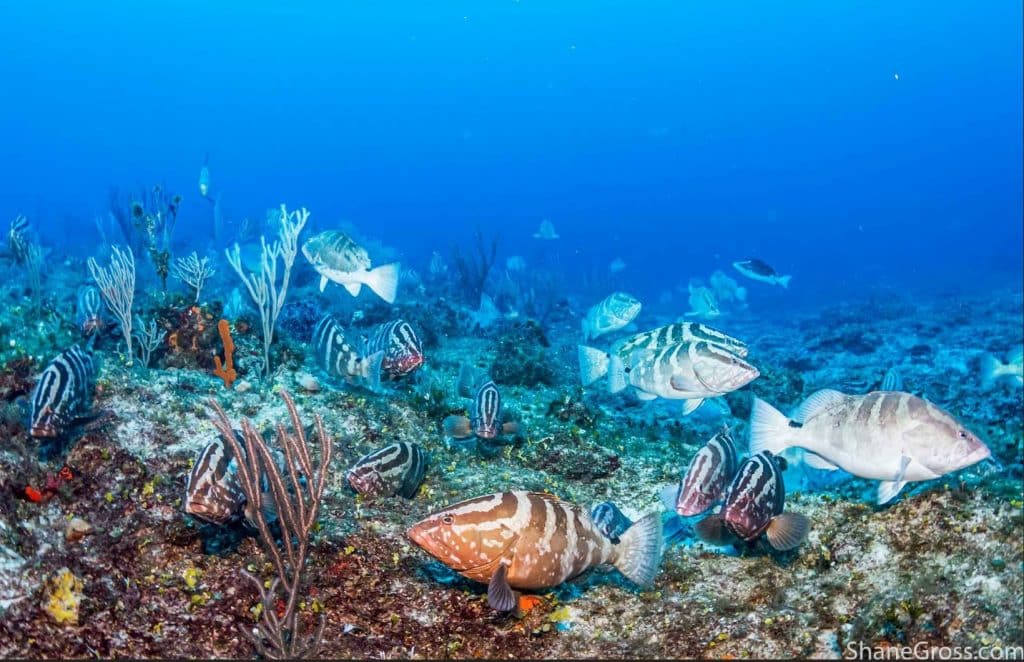
What happens at a FSA?
Spawning aggregations are undoubtedly one of nature’s rarest and most awe-inspiring extravaganzas. Like a colourful dance, the groupers first transition between three colour phases – bicolour, white belly, and dark. These colour shifts intensify in the afternoon and are thought to convey physiological readiness and willingness to spawn.
As sunset approaches, smaller groups break away from the main spectacle and swim higher up the water column. There, the females release eggs and at the same time, the males release sperm. This synchronistic event is incredible to see and optimizes the chances of fertilization!
Afterwards, the smaller groups descend to re-join the spawning party below. All in all, the rendezvous is a relatively short-lived affair; groupers typically begin their homeward migrations after spending just a few days within the FSA.
The reason for “Closed Season:” FSAs and overfishing
Nassau grouper are easy targets for overfishing because FSAs happen at predictable times and places and are the only time of the year when these fish reproduce. Fishing at spawning sites (via traps, or hook and line) can rapidly deplete population numbers, and ultimately lead to fishery collapse.
In fact, the Nassau grouper was listed as “Critically Endangered” on the IUCN Red List in 2018, largely because of this unsustainable fishing practice. Joining the ranks of other critically endangered species including rhinos, gorillas, tigers, and pandas, ¬the Nassau grouper is at Sadly, Nassau grouper fisheries have already collapsed in several locations, including Jamaica, Bermuda, Mexico, Belize and the USA. Nassau grouper populations in The Bahamas are also facing extinction, having declined by up to 60% over the last three decades. Some breeding sites have already been wiped out. Cat Cay, for example, was one of the first FSAs reported in The Bahamas. Historic records show an estimated 30,000 to 100,000 Nassau grouper aggregated at that site in 1971. Today, the Cat Cay FSA no longer exists.
Seasonal closures protect spawning adults during this critical phase of their life cycle. This is why the Nassau Grouper “Closed Season” takes place from Dec. 1 to Feb. 28 in The Bahamas every year. Not only does the “Closed Season” make it illegal to buy, sell, or fish Nassau grouper during the spawning season, it ensures Bahamians can eat their cultural favourites ¬including stew/boil fish and Johnny Cake ¬for years to come!
What’s next?
Dive deeper.
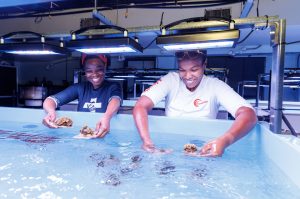
The Bahamas Just Opened a Coral Gene Bank—Here’s Why It Matters
The nation’s first coral gene bank will preserve, propagate and replant coral to reverse devastation from rising ocean temperatures and a rapidly spreading disease Video courtesy of Atlantis Paradise Island.
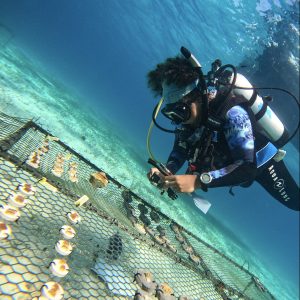
This Is What Conservation Leadership Looks Like
From Interns to Leaders: How PIMS is Powering the Next Generation of Ocean Advocates Taylor photographs coral microfragments in the ocean nursery, helping monitor their fusion into healthy, resilient colonies
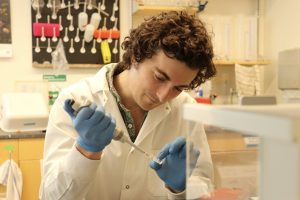
When Ocean Forests Turn Toxic
New study in Science connects chemical “turf wars” in Maine’s kelp forests to the struggles of Caribbean coral reefs — and points to what we can do next Lead author,
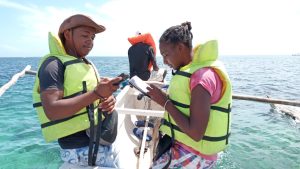
Who’s Really in Charge? Unpacking the Power Struggles Behind Madagascar’s Marine Protected Areas
Researchers head out to monitor Marine Protected Area boundaries—where science meets the sea, and local stewardship takes the lead. The Illusion of Protection From dazzling coral reefs to centuries-old traditions,
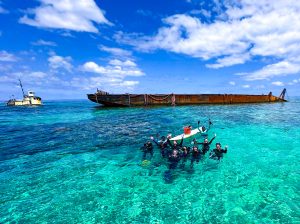
PIMS and Volunteers Step Up as Legal Battle Leaves Barge Grinding Reef in Fowl Cays National Park
Worn out but undefeated, the cleanup crew rallies around their paddleboard “workbench” in front of the stranded tug and barge—a snapshot of community grit after hours of underwater heavy‑lifting. Photo
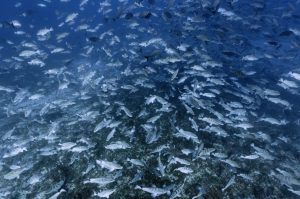
Thriving Fish Spawning Aggregation Inspires Hope for the Future
Nassau grouper FSA in Ragged Island during January 2025. | © André Musgrove Fish Spawning Aggregations & Nassau Grouper Imagine witnessing thousands of fish gathering in a synchronized spectacle, moving
